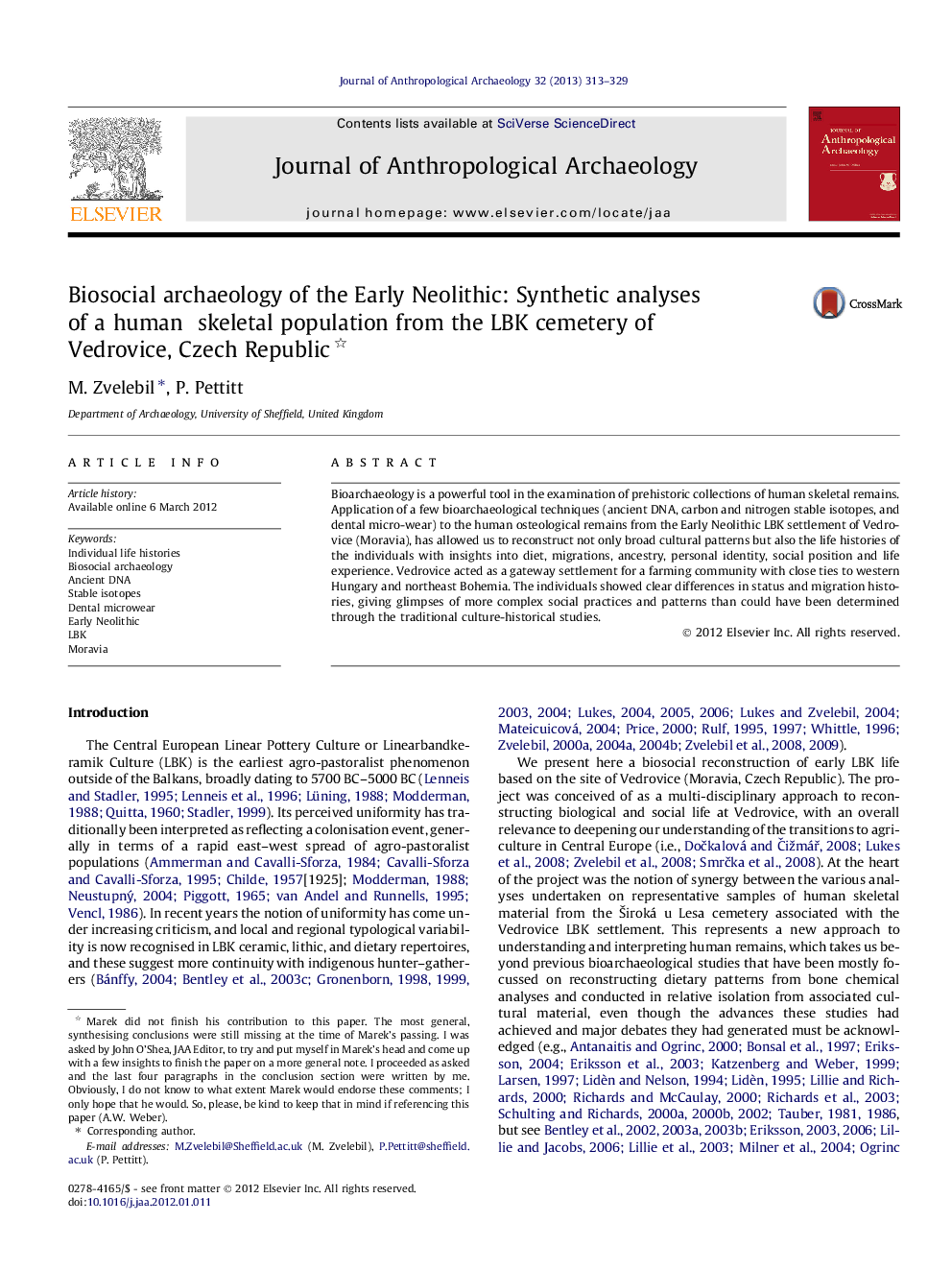| Article ID | Journal | Published Year | Pages | File Type |
|---|---|---|---|---|
| 1034947 | Journal of Anthropological Archaeology | 2013 | 17 Pages |
Bioarchaeology is a powerful tool in the examination of prehistoric collections of human skeletal remains. Application of a few bioarchaeological techniques (ancient DNA, carbon and nitrogen stable isotopes, and dental micro-wear) to the human osteological remains from the Early Neolithic LBK settlement of Vedrovice (Moravia), has allowed us to reconstruct not only broad cultural patterns but also the life histories of the individuals with insights into diet, migrations, ancestry, personal identity, social position and life experience. Vedrovice acted as a gateway settlement for a farming community with close ties to western Hungary and northeast Bohemia. The individuals showed clear differences in status and migration histories, giving glimpses of more complex social practices and patterns than could have been determined through the traditional culture-historical studies.
► Individual life histories, travel, migrations, and marriage patterns. ► Human bioarchaeology, ancient DNA studies, bone chemistry and geochemical tracers. ► Variability in diet and subsistence strategies. ► Variability in human behaviour and cultural change.
